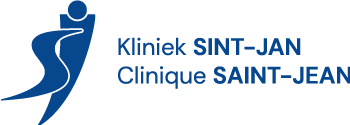
In 2 out of 3 cases, a laboratory analysis of the tumour reveals oestrogen receptors and/or progesterone receptors on the surface of cancer cells.
In such cases, these natural hormones can contribute to the stimulation of tumour growth. Similarly, external intake of these hormones by way of contraception or hormone replacement treatment is liable to stimulate cell proliferation and are these are therefore contraindicated.
As part of the cancer treatment, however, these receptors are therapeutic targets. In fact, these receptors can selectively capture other hormones that will have a “blocking”, anti-oestrogen, progestogen effect.
This treatment will be all the more effective when expression of these receptors is strong.
Hormone therapy is therefore designed in various ways by modifying the patient’s hormonal environment:
- before menopause: by suppressing hormone secretion (inducing anticipated menopause by monthly injections or by means of an ovariectomy) or by blocking receptors with an antihormone (tamoxifen)
- after menopause: several drugs block receptors (tamoxifen and aromatase inhibitors).
Hormone therapy is effective in lowering the risk of recurrence, in the operated breast as well as in the other breast, or metastases; it is also useful in treating advanced cancer to the extent that it sufficiently expresses hormone receptors.
Hormone therapy can therefore, just like chemotherapy, be used at different phases of the cancer disease:
- as an adjuvant treatment, immediately after surgery or after chemotherapy if the latter was indicated; the treatment is normally given for 5 years;
- at times, as neoadjuvant treatment, prior to any treatment in order to limit the need for a surgical procedure; it is the treatment of choice for elderly persons;
- in situations where metastasis has occurred, if the disease is not overly aggressive or progressing too rapidly.
Targeted therapy
Increasingly, targeted therapy is becoming a part of our therapeutic targets with several types of tumours.
In the case of breast cancer in particular, in 15-20% of patients, tumour cells express the presence of c-erbB2/HER2 proteins in sufficient quantities, to which an immunological treatment, Herceptin (Trastuzumab), can be added along with chemotherapy. The presence of this protein is therefore an indispensable condition for prescribing it.
The treatment consists of a specific monoclonal antibody (herceptin) which attaches to this particular receptor on the surface of the cancer cells, c-erbB2/HER2.
This antibody is used in combination with chemotherapy after the operation (adjuvant) or on its own, and can also be helpful in cases of disease regression, when combined with certain chemotherapy products or used alone.
Use of this molecule calls for monitoring of cardiac function as it can be cardiotoxic, especially if combined with other products which expose to the very toxicity or certain risk factors specific to the patient.
